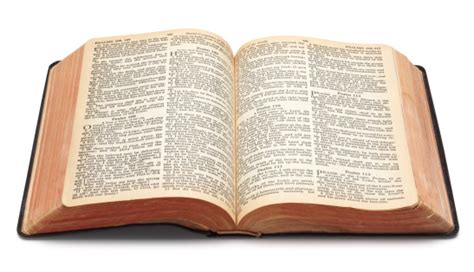- Joined
- Jun 19, 2023
- Messages
- 1,467
- Reaction score
- 2,574
- Points
- 133
- Age
- 47
- Location
- Canada
- Faith
- Reformed (URCNA)
- Country
- Canada
- Marital status
- Married
- Politics
- Kingdom of God
A Genealogical Sketch of the Arminian Family Tree. Research generated by John Bauer, with help from ChatGPT for dates, some missing data, and mapping the results in a nested hierarchy.
- Classical Arminianism (Jacobus Arminius, 1588–1609). Followers draw up the 1610 Remonstrance.
- Early Remonstrant Arminianism (Five Articles, 1610–1625). Condemned at Dort (1618–19); Remonstrants survive in the Dutch Republic.
- High Remonstrant Rationalism (Philipp van Limborch, 1640–1700). Marginalised after the Enlightenment; influence resurfaces via English Latitudinarians.
- High Remonstrant Rationalism (Philipp van Limborch, 1640–1700). Marginalised after the Enlightenment; influence resurfaces via English Latitudinarians.
- General / Free-Will Baptist Arminianism (Thomas Helwys, 1611–present). Continues today as “Classical Arminianism.”
- Corporate-Election Arminianism (F. Leroy Forlines, 1960s–present). Common among Free Will Baptists and some evangelicals.
- Corporate-Election Arminianism (F. Leroy Forlines, 1960s–present). Common among Free Will Baptists and some evangelicals.
- Wesleyan Arminianism (John Wesley, 1738–present). Generates the Methodist connection, Holiness churches, and many Pentecostal bodies.
- Holiness-Pentecostal Arminianism (Phoebe Palmer, A. M. Hills → early Pentecostals, 1867–present). Nazarene, Wesleyan, and Pentecostal denominations.
- Revivalist / Finneyite Arminianism (Charles Finney, 1821–1875). Shapes New-Measure revivalism and much of 19th-century American evangelicalism.
- Decisional-Regeneration Fundamentalism (altar-call tradition, 1880s–1950s).
- Billy Sunday / Billy Graham mass-crusade decisionism (c. 1900–1990s).
- Campus- and youth-parachurch decisionism (e.g., Campus Crusade for Christ / Cru, “Four Spiritual Laws,” 1951–present).
- Billy Sunday / Billy Graham mass-crusade decisionism (c. 1900–1990s).
- Independent-Baptist / Dallas-dispensational off-shoots
- Free-Grace / Anti-Lordship Dispensationalism (Zane Hodges et al., 1970s–present).
- Free-Grace / Anti-Lordship Dispensationalism (Zane Hodges et al., 1970s–present).
- Southern Baptist "Provisionism" (Leighton Flowers, 2012–present).
- Decisional-Regeneration Fundamentalism (altar-call tradition, 1880s–1950s).
- Open-Theist Arminianism (Clark Pinnock, Greg Boyd, mid-1990s–present). Intra-Arminian debate; largely academic.
- Holiness-Pentecostal Arminianism (Phoebe Palmer, A. M. Hills → early Pentecostals, 1867–present). Nazarene, Wesleyan, and Pentecostal denominations.
- Stone-Campbell Restorationism (Barton W. Stone & Alexander Campbell, 1809–present). Emphasises baptism for remission of sins; rejects creeds; views Spirit's work as mediated through word and ordinance. Survives today as Churches of Christ, for example.
- Molinist–Arminian Convergence (William Lane Craig, 1980s–present). Philosophical hybrid grounding conditional election in middle knowledge.
- Early Remonstrant Arminianism (Five Articles, 1610–1625). Condemned at Dort (1618–19); Remonstrants survive in the Dutch Republic.
- Each indent marks a daughter stream flowing out of the parent above it.
- Dates give the period when the strand took recognizably distinct shape (not its entire lifespan).
- Remonstrant stream (continental, 1600s). From Arminius to Episcopius to Limborch. Keeps a nominal doctrine of depravity at first, then rationalizes it away. After 1700, the movement is ecclesiastically alive but culturally peripheral.
- Baptist stream (English, then American, 1611-present). Helwys's General Baptists carry the classical package across the English channel. Free-Will Baptists still taught total depravity plus prevenient grace; the modern "corporate-election" model is their internal tweak rather than a doctrinal surrender.
- Wesleyan-revivalist stream (1738-present). Wesley universalizes prevenient grace and adds perfectionism. Holiness-Pentecostal piety grows from that root. A second branch, Finney's revivalism, collapses moral inability into mere moral indifference and invents the anxious bench, begetting
- mass-crusade decisionism (Sunday, Graham, Cru);
- independent-fundamentalist plus Dallas-dispensational "Free-Grace" theology;
- Southern Baptist "Provisionism."
- mass-crusade decisionism (Sunday, Graham, Cru);
- Frontier Restorationist stream (Stone-Campbell, 1809-present). Born out of Cane Ridge camp meeting (pre-Finney). Insists on immersion "for the remission of sins" and treats the Spirit's work as word-and-water mediated, not as an inward enabling.
- Analytic-philosophical off-shoots (late-20th century). Molinism (Jesuit–Arminian hybrid) anchors conditional election in middle knowledge. Open Theism limits divine foreknowledge to what is acutal or settled. Both remain classroom options more than mass-movement forces.

